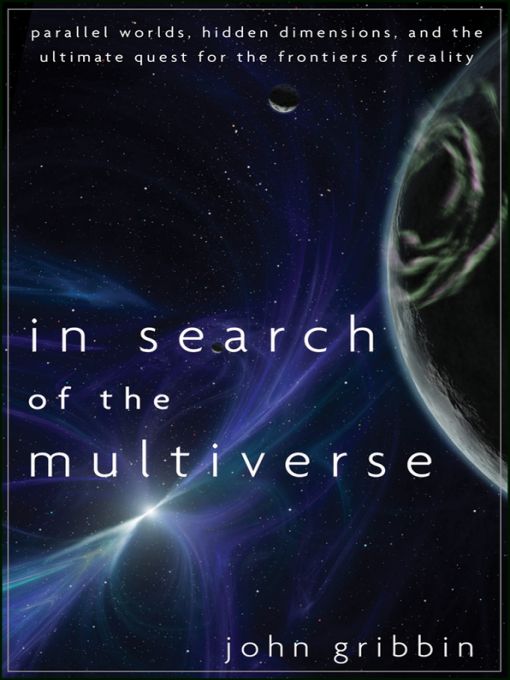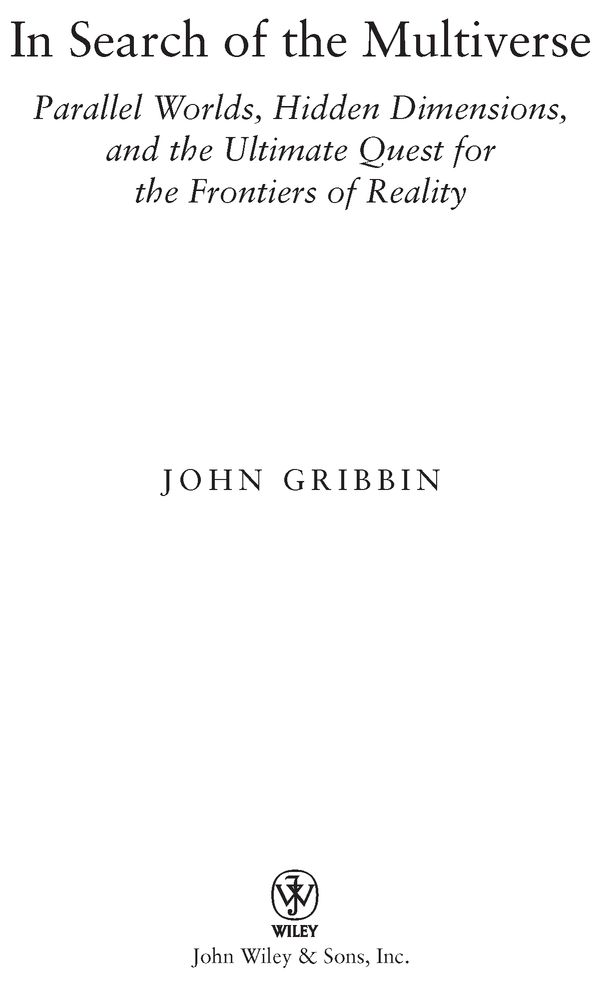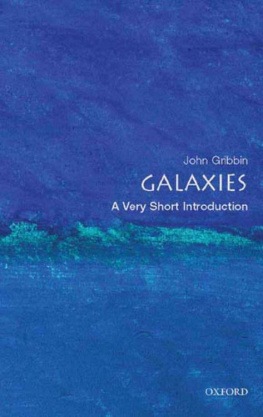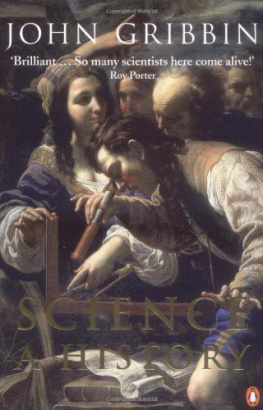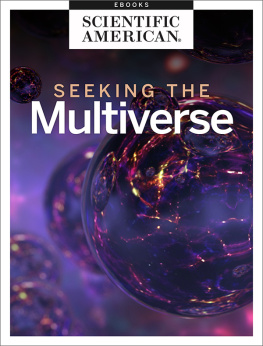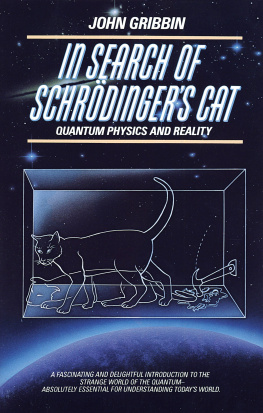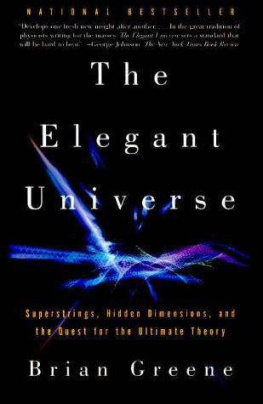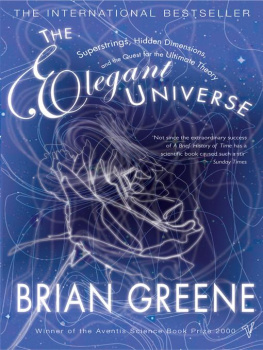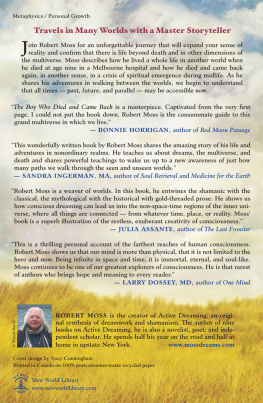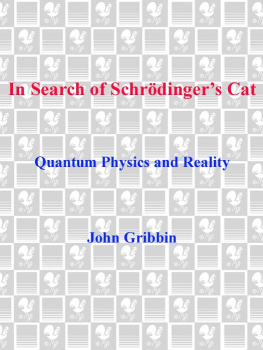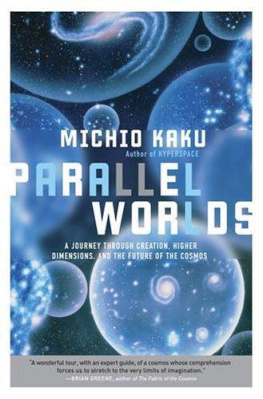Table of Contents
Many and strange are the universes that drift like bubbles in the foam upon the River of Time.
Arthur C. Clarke, The Wall of Darkness, in The Other Side of the Sky
If we dismiss theories because they seem weird, we risk missing true breakthroughs.
Max Tegmark, MIT physicist
Acknowledgements
The Multiverse idea is one that has intrigued me since childhood, and one in which I began to take what might be called a scientific interest in the mid-1960s; this book has benefited from discussions and correspondence I have had with various people over more than forty years, as well as those contacted specifically for this project. I cannot remember them all, but among those I cannot forget are Jim Baggott, Julian Barbour, Warwick Bilton, Raphael Bousso, John W. Campbell, Bernard Carr, Louise Dalziel, Paul Davies, Richard Dawkins, David Deutsch, George Ellis, John Faulkner, William Fowler, Neil Gershenfeld, Nicolas Gisin, Simon Goodwin, Philippe Grangier, Ted Harrison, Mark Hindmarsh, Fred Hoyle, Lawrence Krauss, Louise Lockwood, Jim Lovelock, William McCrea, Paul Parsons, Joe Polchinski, Martin Rees, Lee Smolin, Leonard Susskind, Max Tegmark, Edward Tryon, Alex Vilenkin and Ronald Wiltshire. Kenneth Ford and Eugene Shikhovtsev gave permission to quote material from Shikhovtsevs draft biographical sketch of Hugh Everett.
At the other end of the scale of scientific expertise, my writing has recently benefited from the critical comments of my daughter-in-law, Eleanor Gribbin, who has passed through the English educational system almost untouched by science, and is able gently to remind me that it is not always true that everybody knows the things I think they ought to know. And, as with all my books, the input provided by Mary Gribbin has ensured that the end product tells a coherent story instead of presenting a disjointed collection of my favourite flights of fancy.
The metaphor of the Multiverse library came to me during a visit to Clays printers; many thanks to them, both for a splendid day out and for planting the seed of this idea.
Preface: The Search
I have always been fascinated by the relationship between life and the Universe. How did we get to be here? Why is the Universe so big? How did it all begin - and how will it all end? My search for answers to these questions led me to learn as much as I could about astronomy and cosmology, quantum physics, evolution, the history of the Earth and the possibility of life on other earths elsewhere in the Universe. One of the most important things I learned along the way is that our Universe is governed by a set of very simple laws which not only allow but demand the growth of the kind of complexity that has led to the emergence of complex things like us. But I also learned to think of our Universe rather than the Universe, because there seems to be no reason why different sets of rules could not operate in different regions of spacetime, beyond the boundaries of anything we could ever see, producing universes different from ours, in which, perhaps, complex things like people could not emerge.
This is the idea of the Multiverse. It is often, though not always, associated with the idea of anthropic cosmology, which suggests that we see around us a Universe just right for life because there is a multitude of universes with different physical laws, and life forms like us can only exist in universes like ours. The others are sterile, so there is nobody there to notice what their strange laws of physics are.
So where are these other universes? We cannot search for them physically, like James Cook searching for the southern continent by sailing around the globe in the eighteenth century, but mathematicians and physicists are searching for them metaphorically, developing equations and computer models to try to describe the Multiverse. In fact, they have discovered many different kinds of Multiverse. The Multiverse may be infinite in space, so that regions of space with different physical laws are separated by infinite distances and can never communicate with one another. The Multiverse could be infinite in time, so that different universes with different physical laws are strung out, one after the other, like beads on a wire, and can never communicate with one another. The Multiverse could contain an infinite number of universes separated in different dimensions, like pages in an infinitely thick book, with each page representing a universe that is unable to communicate with the other pages in the book. And there are other possibilities.
This book is about the metaphorical search for the Multiverse, and the variety of possibilities being considered today. It is impossible to say which, if any, of these ideas is right, in the sense of providing an accurate description of the real world, but, as will become clear, I do have my own favourite. It will also become clear, I hope, that there may be less difference between these views of the Multiverse than meets the eye; all of them may be important to an understanding of the Multiverse. The most important thing, a dramatic change that has occurred over the past twenty years or so, is that such ideas are now treated seriously within the scientific community, and are no longer seen as the wild-eyed imaginings of theorists who have been reading too much science fiction. There is a growing body of evidence, increasingly difficult to ignore, that there really is more to the world than the Universe we can see directly.
Even if none of the Multiverse ideas now being investigated by theorists proves to be right - even if it is impossible to prove them right or wrong - this is a shift of perspective as profound as the one which displaced the Earth from the notional centre of the Universe. That is a claim that has been made so often that it has become a clich; this time, its true. It even turns out to be relevant to the question of whether the Universe appeared by accident or design, suggesting an answer that was not what I was expecting when I started looking at the evidence. There are still more questions than answers associated with the concept of the Multiverse, but it is definitely time to see what those questions are, and how the search for answers is progressing.
Introduction: In an Infinite Universe, Anything Is Possible
Five hundred years ago, the Universe seemed to be a small place. It was widely believed that the Earth, our home, was the most important thing in the Universe, and lay at its centre. The Sun and the five known planets (Mercury, Venus, Mars, Jupiter and Saturn) were thought to be relatively small objects in orbit around the Earth, and the stars were regarded as points of light attached to a spherical shell around the Earth, rotating once a day just beyond the orbits of the planets. Apart from the rhythms of day and night and the seasons, this setup seemed to be unchanging and eternal. The thought of there being other worlds was literally heretical. Right at the end of the sixteenth century, Giordano Bruno was burned at the stake for espousing ideas which ran counter to mainstream Catholic teaching. These included the idea that the stars are other suns, and that there must be other earths, and life elsewhere in the Universe - although this particular belief was not the main reason for his conviction.
Things began to change with the work of Nicolaus Copernicus, whose famous book

